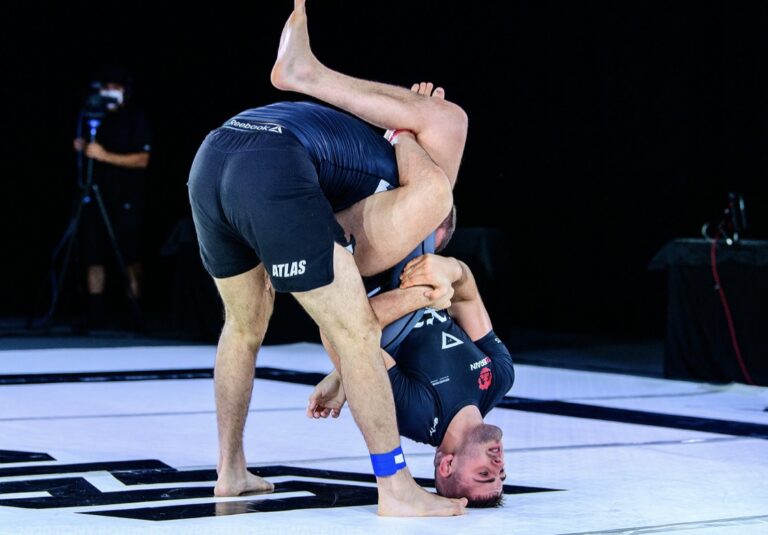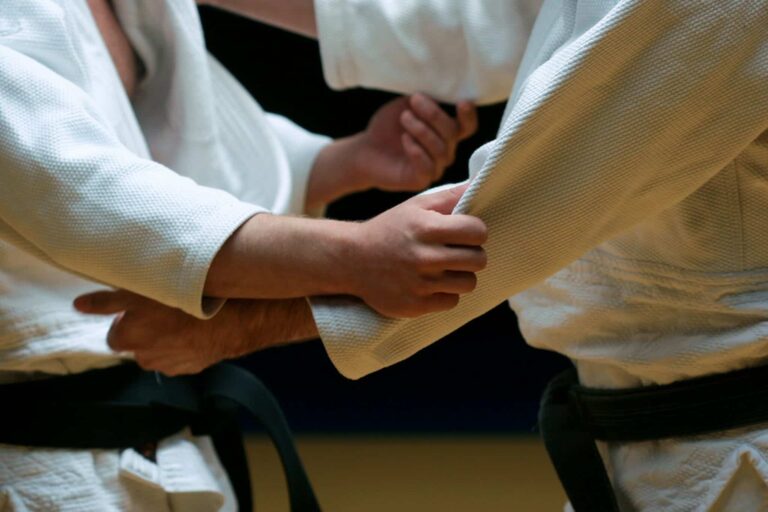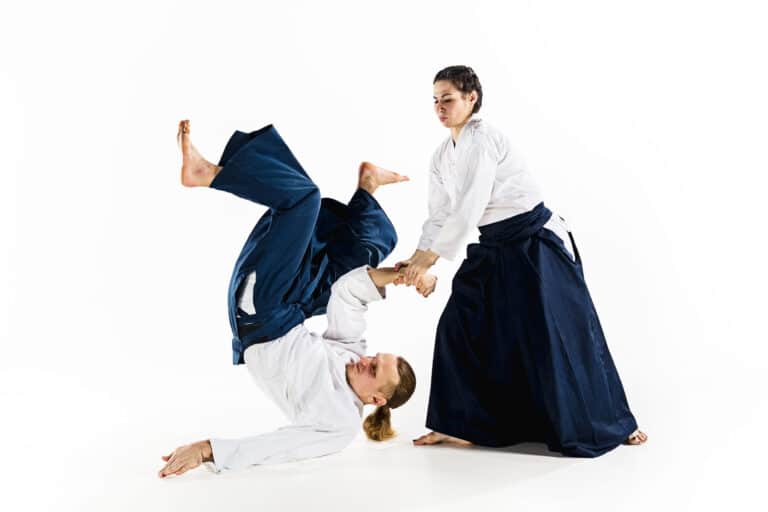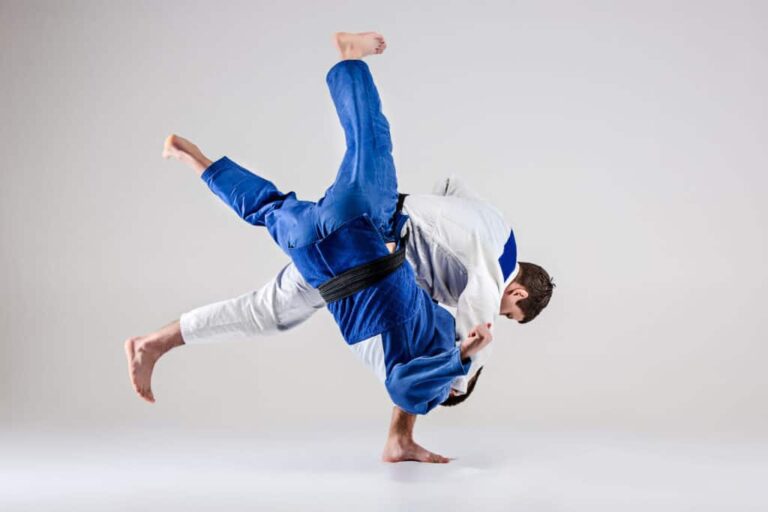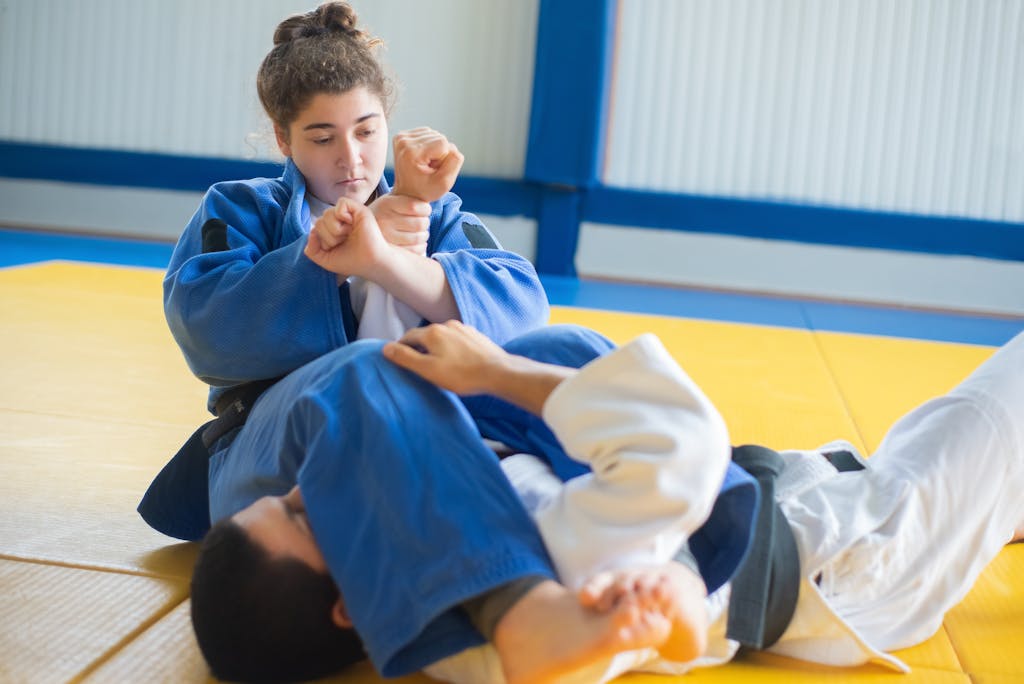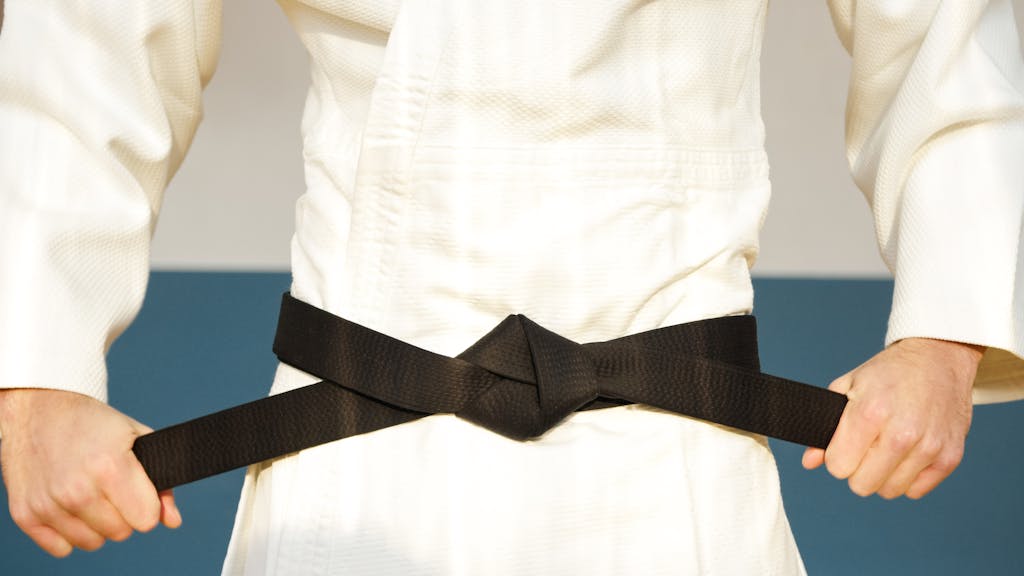Judo Vs Jiujitsu | Is Judo the Same as Japanese Jiu-Jitsu?
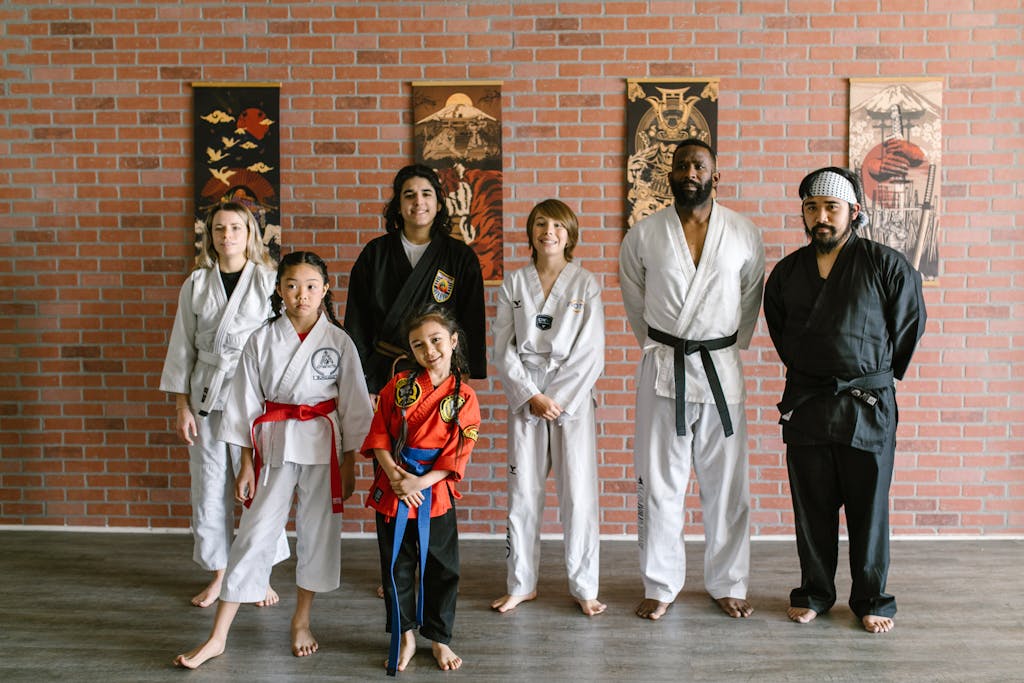
The art of Judo and Japanese Jiu-Jitsu (often referred to as JuJutsu) dates back many years in their origin, yet today, they remain and are more popular than ever. Most people acquainted with martial arts, particularly grappling, are familiar with the names of these disciplines. But are Judo and Japanese Jiu-Jitsu the same?
Judo is not the same as Jujutsu. Judo was developed as an offshoot of Jujutsu. While both disciplines incorporate similar techniques, Judo is more oriented toward throws and trips, whereas Jujutsu was created for battle.
In this article, we will go over the origins and history of these renowned martial art forms and how they evolved into what they are today. We will also explain the rules of each and the contrasting differences between the two disciplines.
By the end of this article, you will have a complete understanding of Judo and Japanese Jujutsu uniqueness, respectively.
The History of Judo and Japanese Jujutsu
Judo is a grappling-based form of martial arts, which relies mainly on throwing techniques, joint locks, chokes, and pins. Today, Judo’s sport is contested by over 100 countries worldwide and has held its place as an Olympic event since the 1964 Summer Games.
Judo gyms or “Dojos” can be found in almost every metropolitan area across the nation, but where did this immensely popular sport come from?
Judo was created in 1882 by a man named Kano Jigoro, who subsequently spread the sport throughout the world. It even once personally showcased his discipline to the 18th U.S. president, Ulysses Grant.
The word Judo translates to “the gentle way.” It was given this name because of its grace and elegance. The idea is to use your attacking opponent’s momentum to redirect their force and throw them through the air.
When done correctly, less strength is required to perform this, and the act appears calm, gentle, and even effortless.
The art of Judo was spawned from the much older Japanese JuJutsu, a close-range combat system developed in the 8th century for samurai to defend against and disable enemy threats.
The unique thing about the art of JuJutsu is that it is commonly taught to many who are not directly involved in the martial arts community, including police officers, correctional officers, and military personnel, as well as in women’s self-defense courses.
Judo Vs Japanese Jujutsu Rules
Since the days of Kano, the sport of Judo has undergone many changes, particularly to the rules and judging criteria. Over time, more stringent regulation was developed to standardize the sport and make it more universally acceptable, allowing it to gain a place on the world stage.
Judo Rules
Because of its history as a system that promotes the utmost honor and mutual respect, judokas (judo practitioners) are required to bow to their opponent at the beginning and the end of each contest. Poor sportsmanship and undignified behavior have a zero-tolerance policy in Judo.
Judokas must wear a traditional uniform, known as a Judogi, which is loose fitting and can be grabbed or held to control the opponent. If you are new to the sport and looking to purchase a Judogi, the Fuji Judo Uniform is of the IJF standard and comes highly recommended.
In the sport of Judo, striking is forbidden and will immediately result in disqualification. This means no punching, no kicking, no knee or elbow strikes, and no headbutting.
Though you can find striking in judo kata, it is never allowed in competition.
Judo incorporates point-based scoring criteria to decide who wins the match, with full or partial points being awarded for the effectiveness of various techniques. If you score an Ippon then the match is over immediately.
As outlined by the International Judo Federation, the full list of Judo contest’s official rules can be found here.
Sport Jujutsu Rules
Many different forms of JuJutsu exist, with slightly different rules and regulations regarding their contestation. On the one hand, JuJutsu can refer to a pure self-defense system merely designed to neutralize threats, greatly focusing on weapon-wielding attackers’ disarmament.
For this comparison, however, when referring to JuJutsu, we will be speaking of what is known as “sport jujutsu,” not to be confused with the more popular sport of Brazilian jiu-jitsu.
The Ju-Jitsu International Federation currently oversees three types of competition at the international level. These are the Duo system, the fighting system, and Ne-Waza. You can read more about the rules here.
The Difference Between Judo and Japanese Jiu-Jitsu
The main differences between judo and Jujutsu are their purpose and origin. Judo evolved from Japanese Jujutsu to become a martial and eventually a sport that would be more widely accepted.
Japanese jujutsu on the other hand was created for the battlefield. Because of these many of the techniques were not as applicable for times of peace.
In addition, many of the techniques were created for warfare from another time in world history. With the rise in war technology, some of the techniques were not seen to be as practical for today as they were when they were created.
Judo has also evolved a lot since it was initially created. This is mostly due to the sport of judo. Since judo became a sport many dojos have evolved to focus more on the sport than the original art form.
What About Brazilian Jiu-Jitsu?
Another martial art that is often confused with Japanese Jujutsu is Brazilian jiu-jitsu or BJJ. BJJ was developed by the Gracie family after a man named Mitsuyo Maeda taught them the art of judo. Maeda was a student of Kano Jigoro the founder of judo.
The Gracie family then adapted this art to become more focused on Newaza or ground fighting. Helio Gracie is often thought of as the grandfather of modern BJJ.
Since he was smaller and weaker than his brothers, Helio learned to use even more leverage and technique than was needed by many of the stronger judokas.
Then in the early 1990s, the Gracie family showcased their art in the first UFC events. Because of the effectiveness that BJJ showcased in the octagon, it sparked the rise in popularity of this not-so-well-known martial art.
Today BJJ is one of the most popular martial arts in the world and is seen as an essential skill to learn if you want to get involved in MMA.
For more on the Judo vs BJJ check out our article: BJJ Vs Judo Here!
Judo Vs Japanese Jujutsu Contest Safety
While Judo and Japanese Jiu-Jitsu’s injury rate is relatively low, there are always inherent risk factors involved whenever training for a contact sport. Thankfully these risks can be drastically minimized by playing smart and following a few tips.
Whenever participating in either Judo or JuJutsu, always be respectful of your opponent, and never act with malicious intent. If you are caught in a hold or a trip, know when to assume defeat. Choose your battles wisely. Never slam or spike an opponent on their head or neck, always relinquish a hold upon your opponent’s forfeiture, and never disobey referee orders.
Always remember that while martial arts does involve competitive combat, its purpose is not to maim your opponent. The ego has no place in the sport and will lead to an immediate ejection.
In summary
In this article, we provided the reader with a general overview of the history, the rules, and the techniques of both Judo and Japanese Jiu-Jitsu, to discern whether they differ from one another, or are in fact, the same. The fact is that judo and Japanese jiu-jitsu are not the same art. That said, judo did evolve from Jujutsu.
While we find strong similarities in their origin and their attire and the honor culture surrounding the two disciplines, there are many fundamental differences between them. Judo is contested primarily, with both competitors standing and attempting to throw one another.
